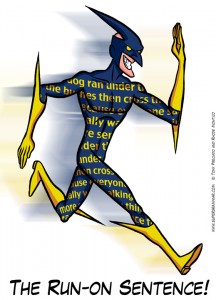English is a difficult language. English is the most commonly used language in America. English consists of many rules. Anything from word choice rules to grammar rules. From a young age, children are learned how to write a paper. Students are taught the importance of grammar. They were taught how important the structure of a sentence was. They are not taught that writing a paper is more about the content of the paper rather than the mistakes made. When I was a child, it was drilled into my head how every sentence had to follow a specific structure. The sentence had to have a subject and a predict. The sentence also had to have correct grammar. At my school rules were taught but not explained. Emily Strasser writes in her article Writing What Matters: A Student’s Struggle to Bridge the Academic/ Personal Divide, that grammar is an important lesson to be taught at a young age but as a student gets older the student should be taught more about how to express his or herself in writing (Strasser ,2007, p.200). Now in college, students are taught that it is okay to make a mistake because it can make the paper have more of an effect on the audience. Authors struggle to discover the line between the errors being effective and not effective. The line is different for each person reading the essay. The purpose of the paper is to have an effective impact on a writer. Mistakes made on purpose can be an effective way to impact the argument. Which is completely against what students were taught during grade school. Students can use run-on sentences to make a positive claim on an essay if it is used for a purpose.
Run-on sentences are a common error made in a writer’s essay. Chris Berry says “run-ons, comma splices, and fused sentences are all names given to compound sentences that are not punctuated correctly”(2013). When a writer gets into the flow of his or her writing, he or she often miss punctuates the work. Run-on sentences are misunderstood as just being a continuous sentence. However, a run-on sentence can also be a sentence that is incorrectly punctuated. A sentence can be a long sentence with many clauses and still be correct if the sentence is punctuated correctly. There are many ways to fix a run-on sentence. Run-on sentences are mainly fixed by adding periods, commas, and semicolons. Instead of combining two independent clauses together a writer can keep the clauses separate. By keeping the clauses separate, it avoids the risk of making a grammatical error. However, the paper is affected by only having simple sentences. It makes the paper choppy. The paper may not have as many grammatical errors, but the paper will not be as effective.
A run-on sentence can be fixed by using a comma and a conjunction. It is impressive how one small mark can impact a sentence. A comma can change the meaning of a sentence. In middle school, I had a teacher breakdown phrase she would always say. Let’s go eat grandpa. Let’s go eat, grandpa. In the first statement, the statement demands to actually eat grandpa. In the second statement, the statement is demanding the grandpa to go eat. Personally I am afraid of commas. At times I want to added commas when I should not, and I leave commas out where they belong. Mrs. Barrack, SCW 8th grade teacher, always taught her students that, “when in doubt leave it out” (n.pag.). This quote in a sense is helpful. By leaving a comma out, it changes the whole meaning of the sentence. Often time’s writers hesitate on when to use a common. When this happens it mainly leads to a comma splice. “A comma splice is two main clauses joined with only a comma” (Kennedy, Kennedy, Muth 2006, p.160). Commas splices can be avoided by adding conjunctions.

No comments